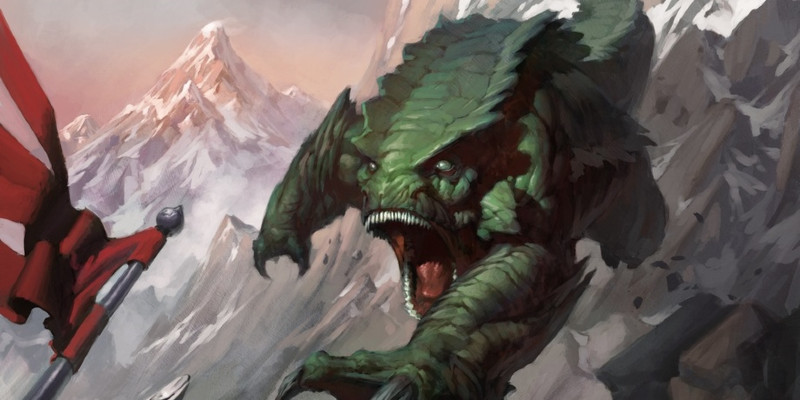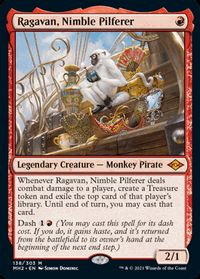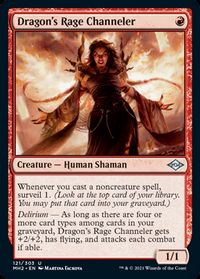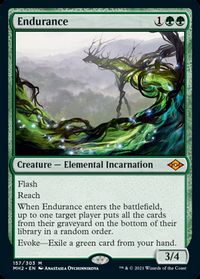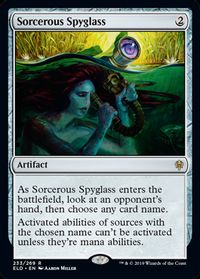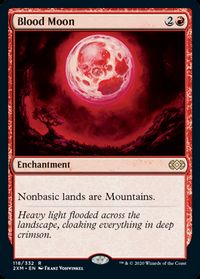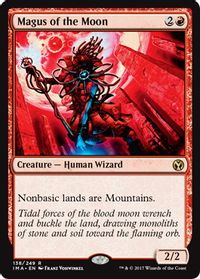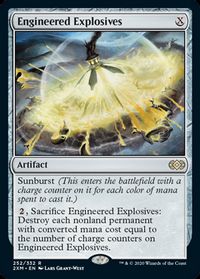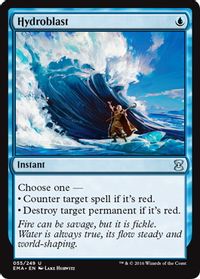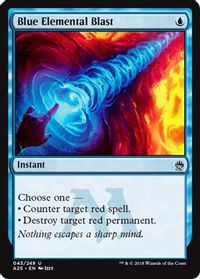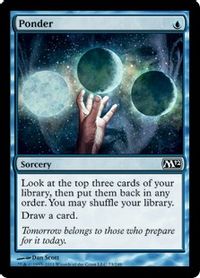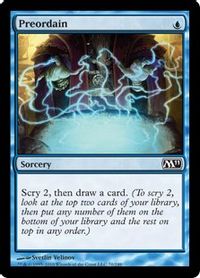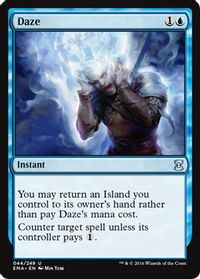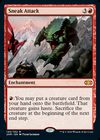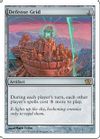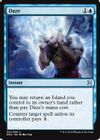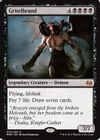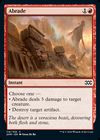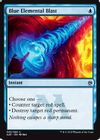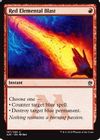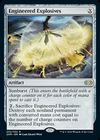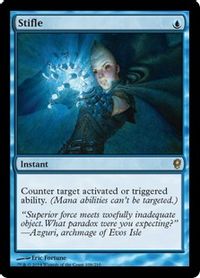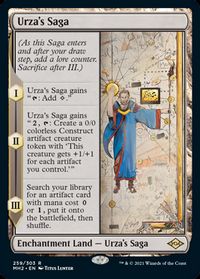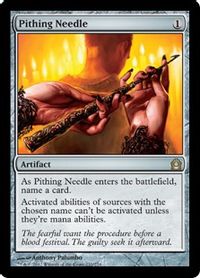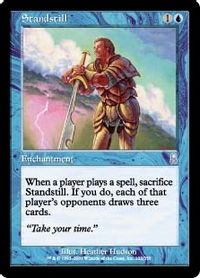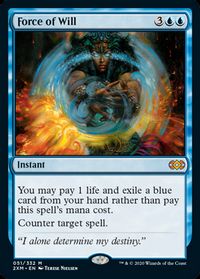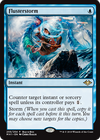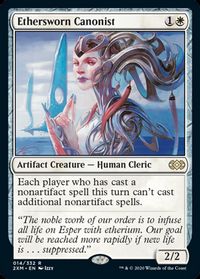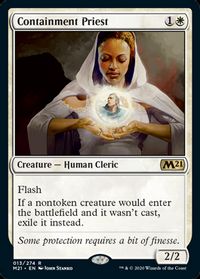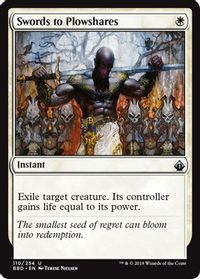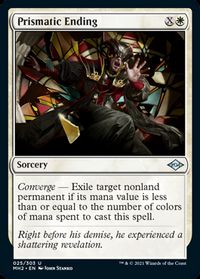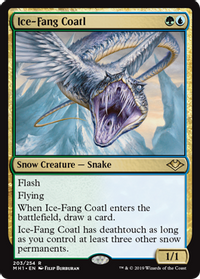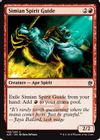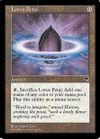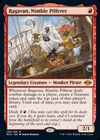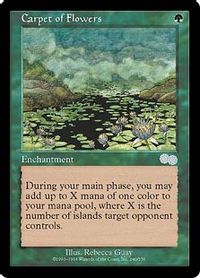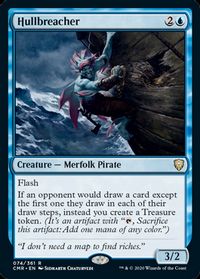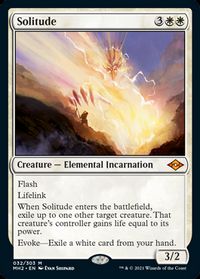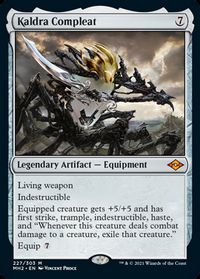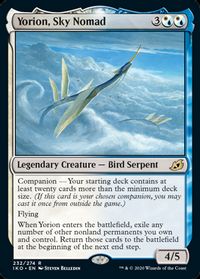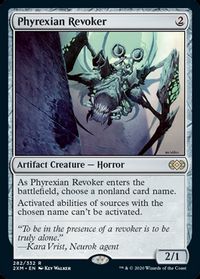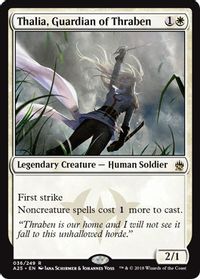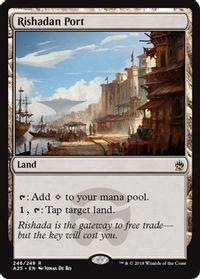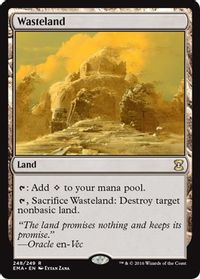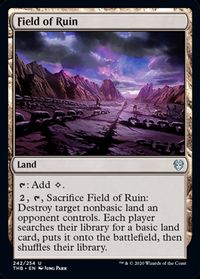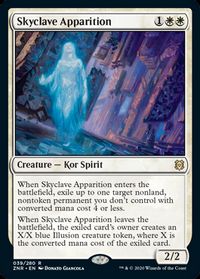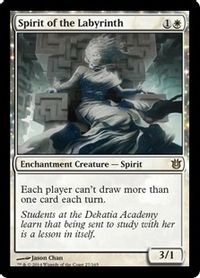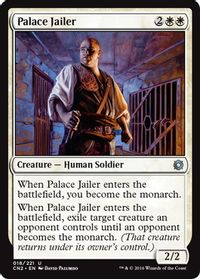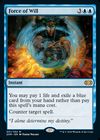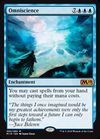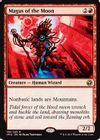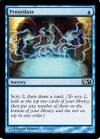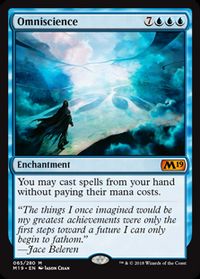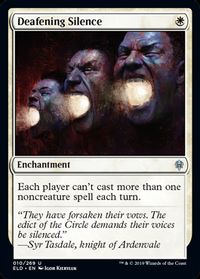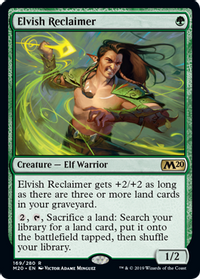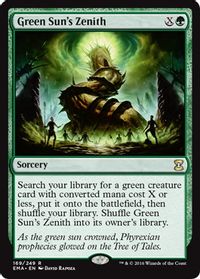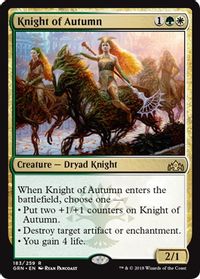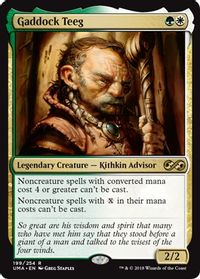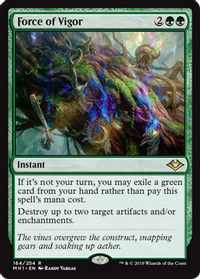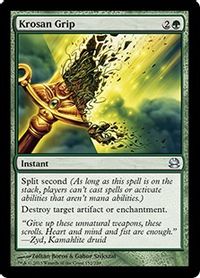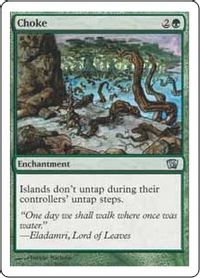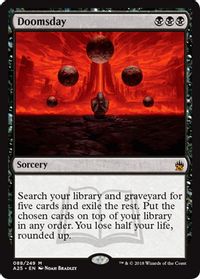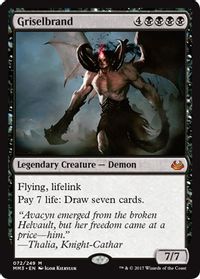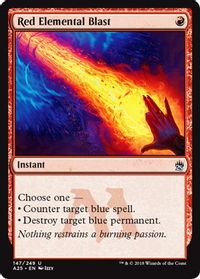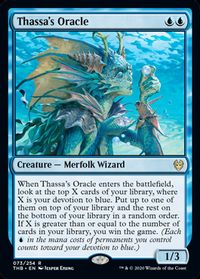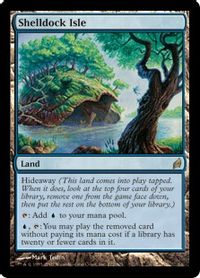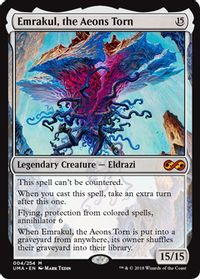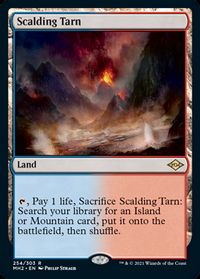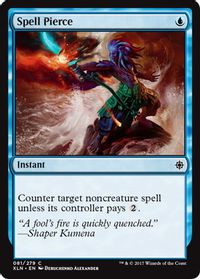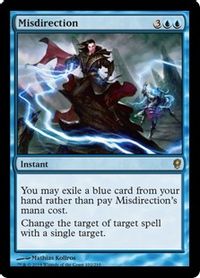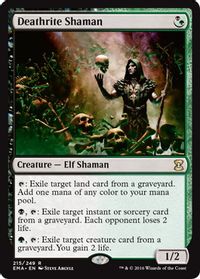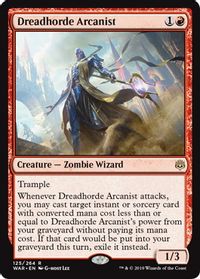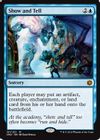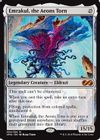Introduction
Hello, everyone!
After focusing on Standard and Historic testing for the Strixhaven Championship in June, I was glad to return to my favorite format Legacy with Modern Horizon 2’s release. Joining in the justified hype, I started off with Izzet Delver, including MH2’s powerhouse creatures 《Ragavan, Nimble Pilferer》, 《Dragon’s Rage Channeler》 and 《Murktide Regent》.
Following the first two weeks of 《Ragavan, Nimble Pilferer》’s dominance, anti-Delver decks like Bant Miracles, which utilized 《Endurance》 well to combat URx’s creatures, led to Izzet Delver losing some of its stranglehold on the format.
I saw a window for my trusty Sneak & Show deck to make a return, which has always had solid matchups against the classic anti-Delver decks like Miracles or Lands. Over the following weeks, I reached the Top 8 of five MTGO Legacy Challenges, finishing close to 100 matches of premier events with a 70% winrate.

Today, I would like to give you a matchup and sideboard guide for my latest list, which I have been using for the past weeks. I hope you find it informative and enjoyable to read.
Deck List Changes
First, let’s compare the latest posted decklist with the initial one from early June:
Sneak & Show in June
Sneak & Show in August
The only changes I made between June and August are found in the sideboard. 《Sorcerous Spyglass》 and 《Blood Moon》 were cut for 2 《Magus of the Moon》, which provide a similar effect in stopping problematic lands like 《Karakas》 or 《Dark Depths》 combo, and conveniently dodges 《Force of Vigor》.
Once your Selesnya Depths or Lands opponents start leaving in 《Swords to Plowshares》 or 《Punishing Fire》 to deal with 《Magus of the Moon》, it might be time to swap back to 《Blood Moon》 and/or 《Sorcerous Spyglass》.
The second change was cutting 《Pyroclasm》 for the second 《Engineered Explosives》. As you will see in the sideboard guide, my post-board plan against Izzet Delver includes boarding in removal on the draw, and 《Engineered Explosives》 has some upside over 《Pyroclasm》 in that matchup.
Firstly, it hits 《Dragon’s Rage Channeler》 with Delirium enabled. Secondly, most lists play 4 《Ragavan, Nimble Pilferer》 nowadays. 《Engineered Explosives》 can provide instant-speed removal against Ragavan, where 《Pyroclasm》 on your turn might just lead to another dashed 《Ragavan, Nimble Pilferer》 on your opponent’s.
Other advantages include the possibility to be cast and activated off basic 《Island》 and 《Ancient Tomb》/《City of Traitors》, as well as hitting problematic non-creature permanents such as 《Pithing Needle》 (much more common now with 《Urza’s Saga》) or various bigger creatures.
Disadvantages are mostly its sometimes-higher cost of 3 mana, including activation, and not being able to sweep diverse hate-boards from D&T with 2- and 3-drops. 《Engineered Explosives》 is also more awkward with 《Omniscience》, where 《Pyroclasm》 can just be cast for free. Overall, I still like 《Engineered Explosives》 over 《Pyroclasm》 at the moment.
As a final aside, I have switched 《Hydroblast》 for 《Blue Elemental Blast》 in my latest list. It’s a small corner case, but I want to prevent 《Dragon’s Rage Channeler》 from getting a free Surveil trigger, if 《Ragavan, Nimble Pilferer》’s ability hits my 《Hydroblast》, which, unlike 《Blue Elemental Blast》, can be cast targeting any permanent.
Now, let’s get into the guide!
Deck Guide
Izzet Delver/Tempo
(Disclaimer: Even though some lists have cut 《Delver of Secrets》, I will still often call the archetype “Delver”, since it still follows the same playstyle of cheap efficient creatures + free disruption)
The most common matchup you will face nowadays, hovering around 20-30% of the metagame. Any time dedicated anti-Delver decks increase in popularity and hold down the Delver decks, you will be able to breathe a sigh of relief, since any Tempo deck is always a tough matchup for Sneak & Show. Nevertheless, my overall record against MH2 Izzet Delver is slightly positive with 11 wins and 7 losses.
With 《Ragavan, Nimble Pilferer》’s release, play/draw has become more important than ever, and your 《Daze》 will become dead cards very quickly, due to 《Ragavan, Nimble Pilferer》’s treasures. The early turns, where your 《Daze》 are still live, are your window of opportunity.
Even though some lists have cut down to 1 or 0 main deck 《Force of Negation》, to hedge against the mirror, the inclusion of 《Expressive Iteration》 will help them dig for their Force effects in the longer games.
As for 《Ragavan, Nimble Pilferer》, with 12 cantrips to hit from your deck, he will often run away with games through card advantages. Still, 12 cantrips also means you have more options to manipulate the top of your library and force the monkey to hit bricks such as lands or combo pieces.
Sometimes you can even use his trigger to maximize the effectiveness of 《Brainstorm》 or 《Ponder》. Always keep the possibility of a dashed 《Ragavan, Nimble Pilferer》 in mind when resolving your cantrips.
Against previous variations of Delver decks, I very rarely liked the play of Dazing their turn 1 threat. Nowadays, you often have to use the otherwise dead 《Daze》 to counter their turn 1 《Ragavan, Nimble Pilferer》, unless you are ready to combo off on your turn.
If you are still missing one combo piece, but are ready to go off otherwise, it can be correct to take the chance and let 《Ragavan, Nimble Pilferer》 resolve, since the mana setback and tempo loss of casting 《Daze》 with the alternate cost can be pretty big. A spot where 《Daze》 can still be useful in the midgame is when they tap out to cast 《Expressive Iteration》 before their land drop.

vs. Izzet Delver/Tempo (On the Play)

vs. Izzet Delver/Tempo (On the Draw)
I still haven’t tested the matchup enough to be completely sure about this sideboard plan, but, so far, it has served me well. Due to 《Daze》 becoming a mainstay in Sneak & Show and therefore being expected and played around, as well as 《Ragavan, Nimble Pilferer》 treasures invalidating it, I’m pretty sure boarding them out on the draw is correct.
Instead, you gear up to play a longer game and remove your opponent’s threats to buy time to try resolving enablers. Remember to try using your removal on 《Ragavan, Nimble Pilferer》 after their first main phase, to avoid another dashed 《Ragavan, Nimble Pilferer》 replacing the removed one.
On the play I still want to stay as streamlined and fast as possible to punish their early tap-outs with maximum free counter-backup.
As for your Delver opponents, they usually gain access to 3-4 《Pyroclasm》 effects, as well as 1 《Karakas》 that can steal games out of nowhere.
Jeskai Ragavan/Saga
The matchup dynamic is quite similar to Izzet Tempo, since the Jeskai Ragavan deck has a similar disruption suite. They even have access to 《Stifle》 in some lists to complement the mana-denial plan.
Additionally, the presence of 《Urza’s Saga》 often turns off your 《Daze》, since they will pass the turn with open mana in order to create a Construct on your turn. Following Construct creation up with tutoring up 《Pithing Needle》 (on 《Sneak Attack》), possibly even landing a 《Standstill》 afterwards, can be a devastating way to lock up games. This means your window to combo off is often limited to the early turns, where your 《Daze》 are still live.
Most Jeskai Ragavan lists only play 4 Force effects main deck, making such an early combo attempt more likely to resolve than against pre-MH2 blue decks, which often had access to 6+ Forces in game 1.
Despite your 《Daze》 threatening to become useless rather fast, you can sometimes play without pressure until the midgame against Jeskai Ragavan. Unlike Izzet Delver, they only have 4 《Ragavan, Nimble Pilferer》 as early threats, so there will be games where they don’t tap out early, which turns off your 《Daze》 as protection, but gives you time to develop your manabase to play around their 《Daze》.
However, newer lists have added 《Dragon’s Rage Channeler》 as another 1-drop. Some have also cut 《Urza’s Saga》, turning into a Delverless Jeskai Tempo style deck. Either way, it’s a tough matchup, similar to Izzet Delver.

vs. Jeskai Ragavan/Saga
《Magus of the Moon》 is another consideration, especially on the play. I don’t like 《Defense Grid》 as much as against Delver, since they can leave up mana on 《Urza’s Saga》 turns. If you know they don’t play 《Urza’s Saga》, you can consider leaving in 《Daze》 on the play, possibly cutting 《Preordain》.
Similar to Izzet Delver, Jeskai Ragavan gains access to a few 《Pyroblast》 effects post-board, sometimes accompanied by 1 《Hydroblast》. Unlike Delver, they also add a combination of white hate-bears, usually 1 《Ethersworn Canonist》, and, more impactful, 1 《Containment Priest》. Boarding in your removal spells helps to deal with them.
Bant Control
As the premier anti-Ragavan deck, post-MH2 Bant Control is fully tuned to deal with pesky 1-mana creatures, thanks to full playsets of 《Swords to Plowshares》 and 《Prismatic Ending》, as well as 《Ice-Fang Coatl》, 《Uro, Titan of Nature’s Wrath》 and 《Endurance》 as roadblocks. Luckily, this means Sneak & Show’s Bant Control matchup continues to be very good, especially pre-board.
Nevertheless, they can still interact with you. Either on the stack with 6 Force effects or by getting rid of 《Show and Tell》 + 《Emrakul, the Aeons Torn》 via 《Jace, the Mind Sculptor》, 《Karakas》 or 《Dress Down》 + 《Swords to Plowshares》.
Still, a resolved 《Sneak Attack》 + any fatty or 《Show and Tell》 into 《Griselbrand》 will usually be impossible for them to deal with, barring corner cases involving a low life total on your side.

vs. Bant Control (On the Play)

vs. Bant Control (On the Draw)
The boarding plan can be adjusted for potential game 3s or if you know they play certain hate-cards such as 《Containment Priest》 (most lists cut 《Containment Priest》 for 《Ethersworn Canonist》).
If they see 《Ragavan, Nimble Pilferer》 in game 2, they are more likely to bring back a few 《Swords to Plowshares》 for game 3, so you can try to hedge by boarding out 《Ragavan, Nimble Pilferer》 again. The monkey gets worse on the draw, since 《Ice-Fang Coatl》 can block it.
Unlike past variations of the UWx Control archetype, Bant Control doesn’t contain red and therefore doesn’t have access to 《Pyroblast》 effects, conveniently for you. Their counter-suite mostly stays the same, except for 1 《Flusterstorm》 in some lists. Due to the lack of 《Pyroblast》, as well as 3 《Carpet of Flowers》 they could board in, I don’t love 《Defense Grid》 here. It’s still a viable sideboard option, though.
《Hullbreacher》 is probably the most problematic sideboard card you should expect from them and is the reason, alongside 《Jace, the Mind Sculptor》, why I like to leave in all 《Daze》 against Bant. Conveniently, neither 《Hullbreacher》 nor 《Containment Priest》 provide the added blowout of blocking your 《Ragavan, Nimble Pilferer》 favorably.
Overall, apart from aforementioned hate-creatures, none of Bant Control’s sideboard options are impactful enough to skew the post-board games in their favor.
Death and Taxes
A classic matchup for many years, D&T has made a resurgence in MH2 Legacy, thanks to a combination of a solid Ragavan matchup and strong new printings in form of 《Solitude》 and 《Kaldra Compleat》.
Historically, the pre-board matchup against D&T has been difficult for Sneak & Show lists without maindeck 《Omniscience》. This continues to be true, albeit slightly less so, partly due to 《Yorion, Sky Nomad》’s companion deck size requirement diluting the main deck and decreasing the chance of drawing their most disruptive silver bullets.
Most Yorion lists are essentially pre-boarded to fight Izzet Delver and Jeskai Ragavan, many have even cut 《Phyrexian Revoker》 completely. Therefore, these lists no longer possess the option of locking you out via 《Phyrexian Revoker》 (naming 《Sneak Attack》) + 《Karakas》 in game 1.
Still, you will face a bevy of disruption. With 《Thalia, Guardian of Thraben》, 《Rishadan Port》 and 《Wasteland》/《Field of Ruin》 providing mana-denial, you will often be tempted to find a window to jam 《Sneak Attack》.
This used to be a viable play against D&T before the printing of 《Skyclave Apparition》 in Zendikar Rising. The 《Skyclave Apparition》 will often be uncounterable through 《Aether Vial》 and tutorable via 《Recruiter of the Guard》. Thus, you should try to play around it, even though it is often difficult to do so through mana-denial.
If they don’t have 《Aether Vial》 (again, less likely to have turn 1 《Aether Vial》 due to an 80-card main deck), you will often be able to jam 《Sneak Attack》 more freely, with 《Daze》 and 《Force of Will》 providing protection from 《Skyclave Apparition》.
As for 《Aether Vial》, it’s one of the early plays you should always consider setting yourself back a turn to counter it with 《Daze》. Exceptions are situations where you already have an early combo hand and 《Aether Vial》 wouldn’t tick up to relevant numbers before that. 《Thalia, Guardian of Thraben》 and 《Spirit of the Labyrinth》 are other early plays often worth countering, although it always depends on your hand.
《Show and Tell》 into a “mere” 《Emrakul, the Aeons Torn》 should be avoided, unless you are pressured through a clock and/or mana-denial. With 4 《Solitude》 (tutorable with 《Recruiter of the Guard》) joining 4 《Karakas》 and sometimes 1 《Palace Jailer》, it is very risky to go for.

vs. Death and Taxes (On the Play)

vs. Death and Taxes (On the Draw)
On the play I like to keep all 12 cantrips, despite 4 《Spirit of the Labyrinth》, since you want the maximum amount of looks on turn 1 to find your most robust card in 《Omniscience》. Apart from 《Flickerwisp》 delaying it a turn (or combining with a 1-of 《Council’s Judgment》 to even remove it), they usually don’t have an answer to 《Omniscience》.
By shutting off 《Karakas》, 《Magus of the Moon》 helps to make 《Show and Tell》 into 《Emrakul, the Aeons Torn》 a safer play, although 《Magus of the Moon》 is easily removed by both 《Skyclave Apparition》 and 《Solitude》. If you know your opponent is leaving in some number of 《Swords to Plowshares》 (or see it in game 2 after winning game 1) to hedge for creatures such as 《Arcane Artisan》, you should consider boarding out 《Magus of the Moon》 for game 3 (bringing back 2 《Daze》 on the play or 2 《Preordain》 on the draw).
Luckily, D&T’s sideboard combo hate of choice is mostly a combination of graveyard hate, alongside a few 《Deafening Silence》 and 《Mindbreak Trap》, which you can and should usually try to play around. The only scary card is 《Containment Priest》 (and, more rarely, 《Peacekeeper》), which most lists play 1 of in the sideboard.
《Omniscience》 gets around 《Containment Priest》 very nicely. 《Containment Priest》 in response to a 《Show and Tell》 with 《Omniscience》 in hand even benefits you in that 《Containment Priest》’s symmetry will exile any creature your opponent puts into play with 《Show and Tell》. It also shuts off their own 《Aether Vial》.
As mentioned in the introduction, 《Engineered Explosives》 can be lackluster at dealing of boards with hate-bears of different mana costs. Conveniently, D&T’s hate-bears are mostly mana value 2 nowadays, apart from a 1-of 《Sanctum Prelate》. One huge upside of 《Engineered Explosives》 over 《Pyroclasm》 here is the ability to remove 《Aether Vial》, in addition to getting around 《Mother of Runes》’ protection ability.
Moreover, you can ignore 《Thalia, Guardian of Thraben》’s tax effect and still cast 《Engineered Explosives》 for Izzet if you want it to enter with 2 charge counters. 《Engineered Explosives》 is less effective against builds that still play 《Phyrexian Revoker》. Also, you should keep the possibility of 《Skyclave Apparition》 exiling your 《Engineered Explosives》 in mind.
All in all, you gain a bunch of answers to their angles of attack in post-board games. Removal spells to get rid of their hate-bears, 《Omniscience》 to get around most answers they have to 《Show and Tell》 + fatty and 《Magus of the Moon》 to shut off 《Karakas》 and their land-based mana-denial in 《Rishadan Port》 and 《Wasteland》. While the pre-board matchup is probably slightly unfavorable, you have all the tools to turn post-board games into favorable ones.
Selesnya Depths
Combining strengths of Maverick, Golgari Depths and Lands, and pushing these decks out of the format to a certain extent, Selesnya Depths is another powerful nonblue strategy with a good Delver/Ragavan matchup.
Even more so than Death and Taxes, Selesnya Depths has very easy access to 《Karakas》 in game 1, with 《Elvish Reclaimer》, 《Knight of the Reliquary》, 《Green Sun’s Zenith》 for either of them, as well as 《Crop Rotation》. Therefore, you should once again try to avoid the route of 《Show and Tell》 into 《Emrakul, the Aeons Torn》.
If you don’t have other options or if your opponent controls a summoning sick 《Elvish Reclaimer》, you sometimes still have to go for it and hope they don’t have one their answers ready. 《Force of Will》 for a potential 《Crop Rotation》 can make 《Show and Tell》 into 《Emrakul, the Aeons Torn》 a little safer of a play, as well.
Unlike D&T, their mana-denial is limited to 3-4 copies of 《Wasteland》, which shouldn’t hinder you too much. Again, be wary of slamming a naked 《Sneak Attack》 on the board to activate on the following turn, since some lists have access to 《Knight of Autumn》, tutorable with 《Green Sun’s Zenith》. 《Sneak Attack》 is still your safest and most resilient play, apart from post-board 《Omniscience》, against any 《Karakas》 deck.
I’m sure many of you already know this and I might have mentioned it in a previous article, but you don’t need two red sources to get a sneaky 《Emrakul, the Aeons Torn》 through 《Karakas》, although it is the more common workaround. If you only have one red source, you can activate 《Sneak Attack》 on your opponent’s end step.
The sacrifice trigger won’t go off until the beginning of your following end step, so you get to untap your single red source and can activate 《Sneak Attack》 again, if they bounce 《Emrakul, the Aeons Torn》 before the declare attackers step. Also, 《Simian Spirit Guide》 is a great help at concealing your ability to present an additional red source to get around 《Karakas》.
To conclude the pre-board matchup dynamic, it mostly revolves around 《Karakas》 or a fast 《Dark Depths》 combo attempt from them. Since Selesnya Depths is more midrange-y than most Golgari Depths variants from earlier metagames, you should usually be able to race them before they make Marit Lage, especially because they don’t have discard to disrupt you.

vs. Selesnya Depths (On the Play)

vs. Selesnya Depths
The cards you board in here are the same tools you gain access to against D&T, even though the matchup dynamic differs. Whereas against D&T you have to fight through a combination of mana-denial and hate-permanents, fighting Selesnya Depths revolves more around racing or disrupting their combo and being prepared for 《Karakas》.
《Magus of the Moon》 prevents Marit Lage creation, while dodging their most common moon hate in 《Force of Vigor》 and/or 《Krosan Grip》. One neat play you can surprise many opponents with, is casting 《Show and Tell》 when they already threaten to activate 《Thespian’s Stage》 targeting 《Dark Depths》. If they don’t activate 《Thespian’s Stage》 in response, you can put 《Magus of the Moon》 into play with 《Show and Tell》 and deny them the opportunity to make Marit Lage. It might seem corner case, but has won me a few games already.
《Engineered Explosives》 and 《Abrade》, apart from removing the occasional 《Gaddock Teeg》, also play a role in stopping their combo, by removing 《Elvish Reclaimer》. Conveniently, this also decreases their ways to find 《Karakas》.
《Omniscience》 is a little less of a game-ender than against D&T, since Selesnya Depths can put 《Knight of Autumn》 into play via 《Show and Tell》. Additionally, 《Force of Vigor》/《Krosan Grip》 can remove 《Omniscience》, if you don’t have 《Griselbrand》 or 《Emrakul, the Aeons Torn》 to cast off of it without passing priority.
Another potentially problematic sideboard card from Selesnya Depths is 《Choke》, and the main reason why I like to leave in all 4 《Daze》 on the play. While 《Choke》 can be played around seemingly easily by not tapping your blue sources before comboing off, you often have to cast cantrips to find combo pieces and take the risk of getting Choked out of the game.
《Engineered Explosives》 can be cast for 3 charge counters with the help of 《Lotus Petal》, but apart from that, you don’t have an out to a resolved 《Choke》. Still, 4 《Lotus Petal》 and 2 《Simian Spirit Guide》, alongside 6 sol-lands can help you rebuild your mana-base and lessen 《Choke》’s impact.
Like D&T, Selesnya Depths dedicated combo hate is mostly limited to 3 copies of 《Deafening Silence》, which is mostly irrelevant against Sneak & Show.
Doomsday
The second premier combo deck alongside Sneak & Show, Doomsday is a rather close matchup. The threat of a fast 1-card combo, protected by discard and counter-magic, often turns it into a play-draw dependent affair. This is amplified by the presence of 4 《Daze》 in both your lists.
Even though most Doomsday lists don’t play 《Cavern of Souls》 in the main-deck at the moment, you should always try to counter 《Doomsday》 instead of letting them make a pile. There are some exceptions, where you would have to run your 《Force of Will》 into their 《Daze》, or if you expect them to pass the turn and can save your counter to push through your own combo on your turn. Your mana acceleration helps play around their 《Daze》.
In direct comparison, your optimal and fastest combo of 《Show and Tell》 into 《Griselbrand》 usually trumps theirs of resolving Doomsday, as long as their pile doesn’t include Cavern of Souls. 《Griselbrand》 can draw enough counters to win the counter-war against their 《Pact of Negation》 pile, or draw into 《Sneak Attack》 + 《Emrakul, the Aeons Torn》, if your mana allows it.
Assuming a situation where your opponent resolved 《Doomsday》 on their turn and you had 《Griselbrand》 enter the battlefield via 《Show and Tell》 on your turn: If you already made your land drop for the turn, used up all your mana to cast 《Show and Tell》 and would rely solely on 《Lotus Petal》 and 《Simian Spirit Guide》 to combo into 《Sneak Attack》, you should consider saving 《Griselbrand》 activations for when 《Thassa’s Oracle》 is on the stack (again, only if you don’t expect 《Cavern of Souls》 pre-board).
Not only does this protect your counters from their discard spells, it also allows you to draw into combinations of 8+ cards like 2 《Force of Will》 + 2 Pitch cards, 2 《Daze》 and 《Sneak Attack》 + 《Emrakul, the Aeons Torn》, where you would have to discard down to 7 cards, if you had activated 《Griselbrand》 on your turn instead.

vs. Doomsday (On the Play)

vs. Doomsday (On the Draw)
The post-board games get more grindy, as you both stock up on interaction. Many Doomsday lists add up to 4 《Force of Negation》, as well as a few 《Pyroblast》 effects in Grixis versions, so you will have a bit of a harder time to push through your enablers.
《Ragavan, Nimble Pilferer》 is excellent against Doomsday. He dodges 《Force of Negation》, has a lot of excellent hits with their cantrip cartel and discard spells, and can even sometimes mess with their 《Doomsday》 piles if they don’t expect him.
《Red Elemental Blast》 can not only protect your enablers from their Forces (be careful not to turn on their 《Daze》, though), but is also able to catch an unprepared opponent off-guard if they cast 《Thassa’s Oracle》 via 《Cavern of Souls》 only to have it destroyed in response to the trigger.
However, most Doomsday players will be prepared for such a scenario and prepare 《Street Wraith》 or other ways to ensure they have 0 cards in their library when the 《Thassa’s Oracle》 trigger resolves (devotion to blue = 0 still means they win the game).
Another sideboard card you should keep in mind, but sometimes can’t afford to play around, is their own 《Emrakul, the Aeons Torn》, which combos via 《Shelldock Isle》 for another Doomsday pile kill. When casting their cantrips or making mulligan decisions, they will usually welcome an 《Emrakul, the Aeons Torn》 with open arms into their hands, since it can lead to blowouts when put into play via 《Show and Tell》.
If you notice such a play pattern from certain opponents or want to hedge against it in general, you can consider boarding in 2 《Omniscience》 for 2 《Preordain》 both on the play and draw. This also has the added benefit of potentially turning 《Show and Tell》 into 《Emrakul, the Aeons Torn》, which gives them a turn to combo off, into 《Show and Tell》 into 《Omniscience》 + 《Emrakul, the Aeons Torn》 to win on the spot.
Overall, the Doomsday matchup is close. 《Ragavan, Nimble Pilferer》 can take over post-board games and dodges most of their counters, but the games can go either way.
Sneak & Show
The mirror is as volatile and unpredictable of a matchup as ever, and, now that 《Daze》 has become a mainstay in most list, is quite heavily play/draw-dependent. Some other lists even play 《Ragavan, Nimble Pilferer》 main deck, which can be very problematic, due to having an additional high-impact hit in 《Sneak Attack》, apart from cantrips. Treasure production is also very relevant when ramping to an ideally 《Daze》-proof 《Sneak Attack》.
If you don’t know that you’re actually playing the mirror yet, recognizing it can be crucial, so you don’t just run out a turn 2 《Show and Tell》 into fatty, putting your opponent on Izzet Delver after a 《Scalding Tarn》 – pass or 《Ponder》 start.
More conveniently than before MH2, Izzet Delver now plays so many one drops that they will rarely pass turn 1 without making any play. You usually shouldn’t cast a blind non-《Daze》-proof 《Show and Tell》 on turn 2 anyway, unless you are equipped to deal with the most common eventualities.
In the mirror, this might include having the option of putting in 《Sneak Attack》 instead of a fatty and activating it on the same turn. Even without 《Omniscience》, the threat of putting in 《Sneak Attack》 via 《Show and Tell》 often turns 《Show and Tell》 into just as much of a must-counter as 《Sneak Attack》.
Inversely, if your opponent doesn’t know that they are playing the mirror yet, they might run out a 《Show and Tell》 into your fatty and get punished. The mirror can get very silly and sometimes blind or risky plays get rewarded, but I usually try to play it as conservatively and slowly as possible. There are exceptions, usually including a hand of multiple enablers, where I just jam turn after turn (《Show and Tell》 into 《Show and Tell》, with 《Sneak Attack》 in hand, for instance).
As always, 《Omniscience》 is a mirror-breaker, so the OmniSneak variant is more skewed towards your opponent’s side than the “full” mirror.

vs. Sneak & Show (On the Play)

vs. Sneak & Show (On the Draw)
I like to keep in all 《Daze》 in the mirror, because it still mostly revolves around 3 and 4 mana spells. Still, with 《Ragavan, Nimble Pilferer》 entering Sneak & Show sideboards, cutting 《Daze》 might be a consideration in the future, especially on the draw. If you know your opponent is either not running 《Daze》 at all or is definitely cutting them, you can also consider boarding out more acceleration and bringing back 《Preordain》 and/or the 4th 《Sneak Attack》.
The reason for boarding out the 4th 《Sneak Attack》 in general is either in race matchups or when you don’t want to be swamped with multiple copies in hand. Even in the mirror, you would rather jam 《Show and Tell》 after 《Show and Tell》, than having to wait a turn or two for 《Sneak Attack》 to be castable.
My preferred role in postboard matches doesn’t change much, although I assume the control role even more often, thanks to gaining access to some additional counters to do so. 《Ragavan, Nimble Pilferer》 helps a lot and you are definitely at a disadvantage in the mirror without any copies in your 75. I have even seen players board in 《Abrade》 to deal with 《Ragavan, Nimble Pilferer》, but I don’t think it’s worth it, overall.
Closing Thoughts
On 《Daze》 in Sneak & Show
As you might have noticed in the matchups guide section, I am not as high on 《Daze》 in Sneak & Show as I used to be. This has mostly to do with 《Ragavan, Nimble Pilferer》’s treasures invalidating 《Daze》 as protection very quickly.
While Delver and blue Midrange archetypes used to be constrained on mana if they wanted to deploy threats, this is no longer the case. Their threats are much cheaper, there are no more early tap-outs for two-drops like 《Dreadhorde Arcanist》 or 《Tarmogoyf》, and they actually generate extra mana with 《Ragavan, Nimble Pilferer》.
Additionally, 《Daze》 has become such a mainstay in Sneak & Show over the past two years or so, that many players expect and actively play around it. With 《Ragavan, Nimble Pilferer》 making matchups more play/draw dependent than before, putting yourself at an even further disadvantage for being on the draw by playing 《Daze》 in your list is quite detrimental.
Nevertheless, I haven’t found a good alternative for 《Daze》, yet. 《Spell Pierce》/《Flusterstorm》, which I used to run before, might be great against Control and Combo decks, but are much worse against Delver and Tempo strategies. If they 《Force of Will》 your enabler and you have to use an additional mana source to fight back with 《Spell Pierce》 or 《Flusterstorm》, all it usually does is turn on their otherwise dead 《Daze》. 《Misdirection》 is another consideration, but it’s only good for the counter-war and can’t be used to counter problematic opposing spells.
For now, 《Daze》 is still the best, most versatile protection spell available to complement 《Force of Will》, but its slot is not set in stone anymore.
On 《Ragavan, Nimble Pilferer》
《Ragavan, Nimble Pilferer》 should be banned in Legacy.
He’s ridiculously undercosted, the option to Dash adds so much flexibility and even if his trigger never hits castable cards, the treasure is enough value already. Once he hits castable cards like cantrips or creatures, planeswalkers, 《Sylvan Library》, discard spells, it becomes completely absurd.
Izzet Delver was the best Legacy deck before MH2 and has now gotten a complete upgrade to its creature-base.
If the community thought 《Deathrite Shaman》 and 《Dreadhorde Arcanist》 were too oppressive and did too much for their cost, they should think of 《Ragavan, Nimble Pilferer》 as just as ban-worthy. Legacy is still my favorite format and I will keep enjoying it, but I still hope action gets taken.
Until next time, I hope you enjoyed this article!
Jonathan Anghelescu (Twitter)


